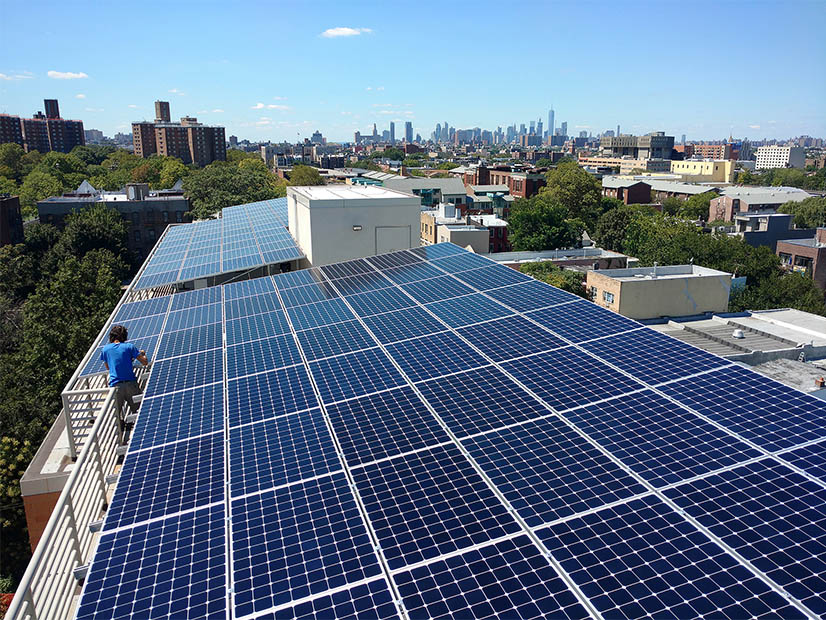RENSSELAER, N.Y. — New York now has more than 5,000 MW of behind-the-meter (BTM) solar capacity, bringing the state closer to its goal of installing 10,000 MW of distributed solar energy by 2030, NYISO announced at the Dec. 14 Operating Committee meeting.
Aaron Markham, NYISO vice president of operations, reported to the OC that an additional 59 MW of BTM solar integrated into the grid since the previous month, raising the total to 5,018 MW. (The New York State Energy Research and Development Authority reports a slightly higher 5,037 MW of distributed solar from 211,083 projects through Sept. 30.)
Markham added that in November, NYISO implemented improvements to the BTM solar forecasting system, which allows for forecasting on a 15-minute instead of an hourly basis. “The expectation is this will improve the performance and accuracy of these forecasts,” he said.
Markham also noted that November’s peak load reached 21,305 MW on Nov. 29. (See “October Operations,” NYISO Braces for the Coming Winter.) The month’s minimum load was recorded Nov. 5 at 12,471 MW.
Central East Limits
The OC voted to approve a draft report presented by NYISO re-evaluating the impact of a loss of a New England capacity source on Central East voltage limits.
The report concludes that the recent energization of the Nos. 351 and 352 Edic-Princetown 345-kV lines on the Segment A project allows Central East to support a loss of 1,500 MW, an increase from 1,320 MW.
The Central East interface is a key part of New York’s transmission that regulates the flow of electricity from New England to the central parts the state, in particular Mohawk Valley (NYISO Zone E) and the Capital region (NYISO Zone F).
Raj Dontireddy, a manager of operations engineering at NYISO, said that because NYISO operators cannot monitor or control ISO-NE’s sources and dispatch, it is crucial for the ISO to manage imported energy without compromising Central East.
Matt Cinadr, a power systems operations specialist with The E Cubed Co., asked whether the interface could handle more than the 1,500-MW limit.
Dontireddy responded that while 1,500 MW is the maximum allowed based on current limits, NYISO operators can permit a higher ISO-NE source if the total capacity of the Central East interface is not fully used. Markham added that analyses suggest this could increase to around 2,000 MW if the interface has room.
Order 2023
Thinh Nguyen, NYISO senior manager of interconnection projects, informed the OC that the ISO plans to file its proposed interconnection cluster study process to comply with FERC Order 2023 on April 3, 2024.
Nguyen provided a detailed review of the cluster study, addressing stakeholder questions and concerns, and shared a comprehensive overview chart that details the interconnection timeline and requirements developers must meet to proceed through the queue process.
Stakeholders continued to press NYISO on various aspects of the cluster study process, but the nature of their questions suggested an increasing understanding and acceptance of the proposal compared to previous times the cluster study was discussed. (See NYISO Stakeholders Question Proposed Interconnection Timelines, Deposit Rules.)
NYISO will continue developing its proposal into the early part of next year and anticipates reviewing specific tariff language soon.


